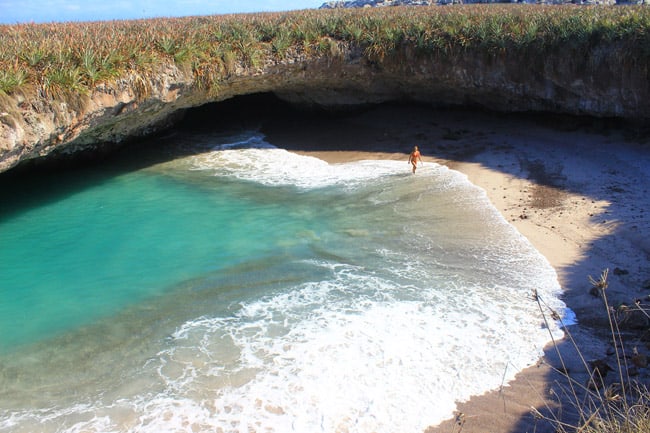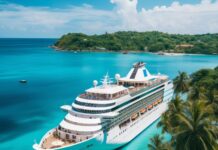
The famous ‘Hidden Beach’ in the Marieta Islands, Playa Escondida in Riviera Nayarit, is closing temporarily to make way for a new conservation program and environmental restoration.
The Marietas are an uninhabited archipelago of volcanic islands located west of Puerto Vallarta, Mexico, at the mouth of Banderas Bay. They were made famous in the 1960s following a campaign by the oceanographer Jacques Cousteau, who fought to protect this marine habitat against harmful human activity.
Many of the remarkable caves and rock formations on the islands, including the Hidden Beach, are believed to have been created in the early 1900s when the Mexican government began using the area for military testing. The Hidden Beach is essentially a bomb crater that reveals a secluded stretch of beach only accessible at low tide through a water tunnel. Short of being dropped in from above via helicopter, the only way of getting to the beach is by swimming or kayaking.
The flora and fauna of the islands were damaged for decades due to the impact of test bombs, but following the work of Cousteau and later campaigners, the region was declared a national park in 2005. Since then, the pristine waters and marine life have been replenished, and it is now a federally protected nature reserve and UNESCO biosphere reserve.
Access to the beach will be restricted for two months for essential conservation improvements and maintenance. Other areas of the Marieta Islands will still be accessible by officially sanctioned tour operators while this restoration work is underway. Groups can enjoy snorkeling, diving, kayaking, and bird watching, and the area is home to diverse marine life including humpback whales, octopus, sea turtles and tropical fish.
“Playa Escondida, located in the Islas Marietas, is an icon of Riviera Nayarit and one of the most renowned natural treasures in our region, thus we must be proactive in preserving it for generations to come,” says Richard Zarkin, public relations manager for the Riviera Nayarit CVB. “Our destination prizes its nature and prioritizes the preservation of our beaches, flora and fauna, particularly as tourism increases to the region, to assure that our visitors will enjoy the same pristine natural environment now and in the future.










